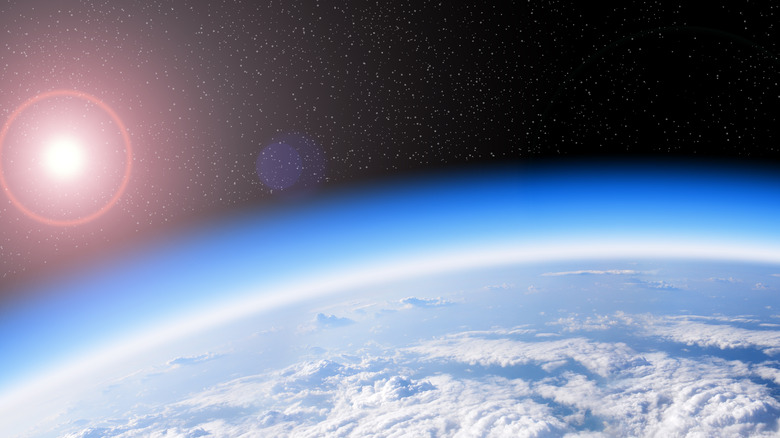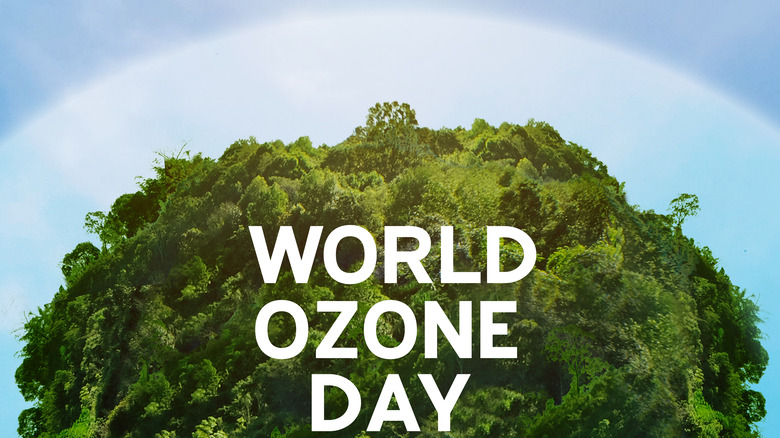Is There Still A Hole In The Ozone Layer?
There were lots of things to worry about in the 1980s and 1990s. The ozone layer was certainly high up on the list. It was proclaimed in those times that people were ruining the protective barrier that exists between Earth and the elements, mostly with their aerosol Aqua Net hairspray cans and their chlorofluorocarbon-fueled refrigerators (via Vox).
At first, nobody paid this much attention. But when scientists collectively got together and announced that the ozone layer had a gaping hole in it and the planet was pretty much doomed, the public responded with overwhelming enthusiasm. Boycotts and protests pursued. People everywhere were vowing to give a hoot about things like pollution and chemical compound-induced atmospheric damage.
Perhaps the only thing more surprising than this sweeping public support for the ozone layer was the deafening silence that followed. It seems as though suddenly, out of the blue, people just stopped talking about the ozone layer, leaving many to wonder what happened. Is there still a massive hole in the stratosphere that speaks of impending doom? The surprising answer is ... not exactly.
The ozone layer is on its way to being completely fixed
According to Discover Magazine, the ozone layer is a complex issue because the hole in it is not completely closed yet, but things are much better. As it turns out, the communal effort to pressure companies into ditching harmful CFCs (chlorofluorocarbon gases) that were damaging the ozone layer was a colossal success.
Vox reports that CFC consumption experienced a sharp decline prompted by public efforts. To put things into perspective, CFC consumption in the '80s was estimated to be as high as 800,000 metric tons. As of 2014, CFC consumption was down to approximately 156 metric tons. At this rate, the ozone layer could return to normal in less than 20 years, by the year 2050 to be exact.
So, while technically there is still a thinning issue with the ozone layer, the problem is much less dire today. The powerhouse behind this huge environmental achievement is none other than the Montreal Protocol, a global agreement to protect the stratosphere at all costs, according to the U.S. Department of State. While fixing the hole in the ozone layer is a massive step in the right direction, experts agree there's still more to be done and everyone must get on board.

